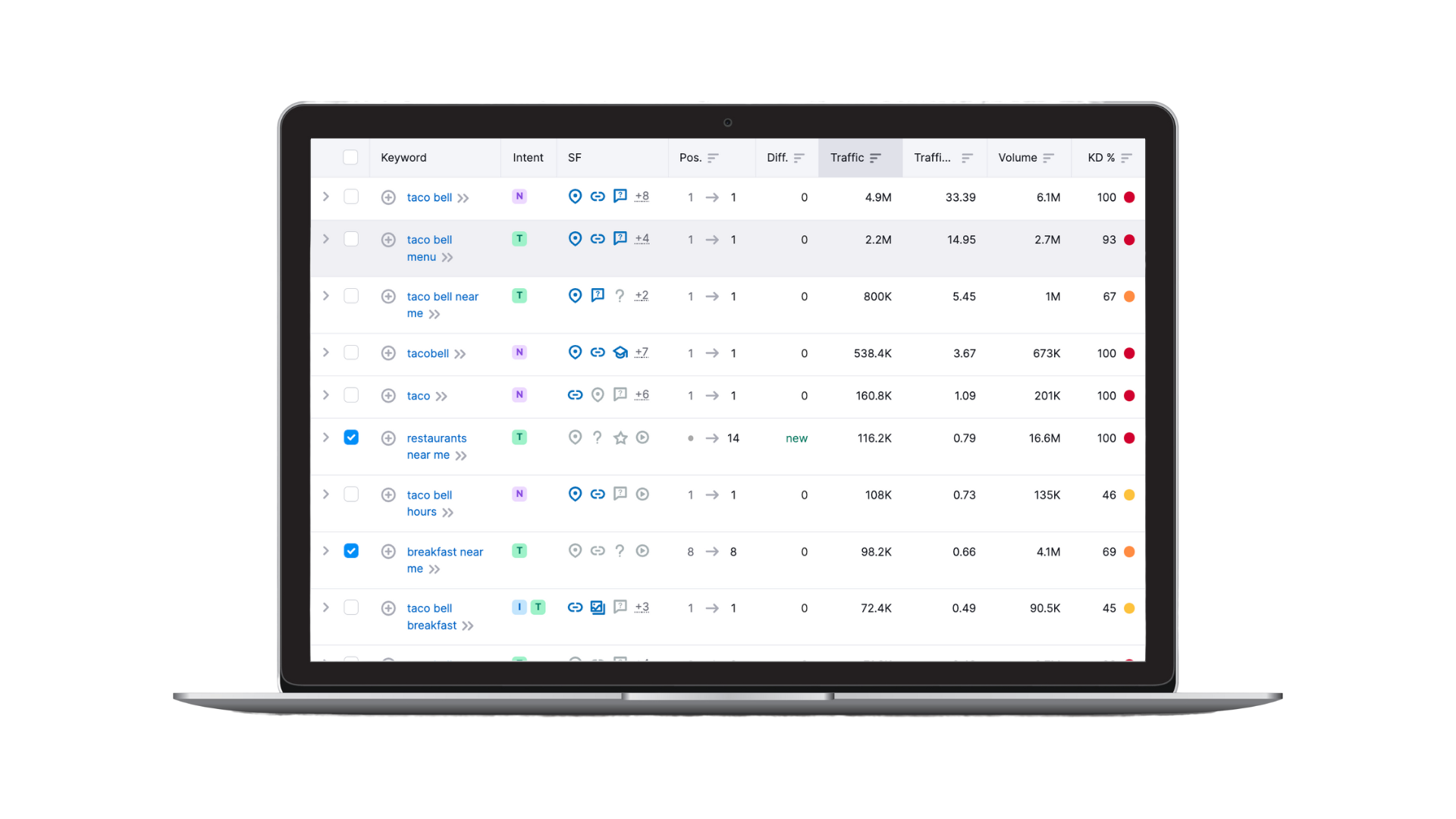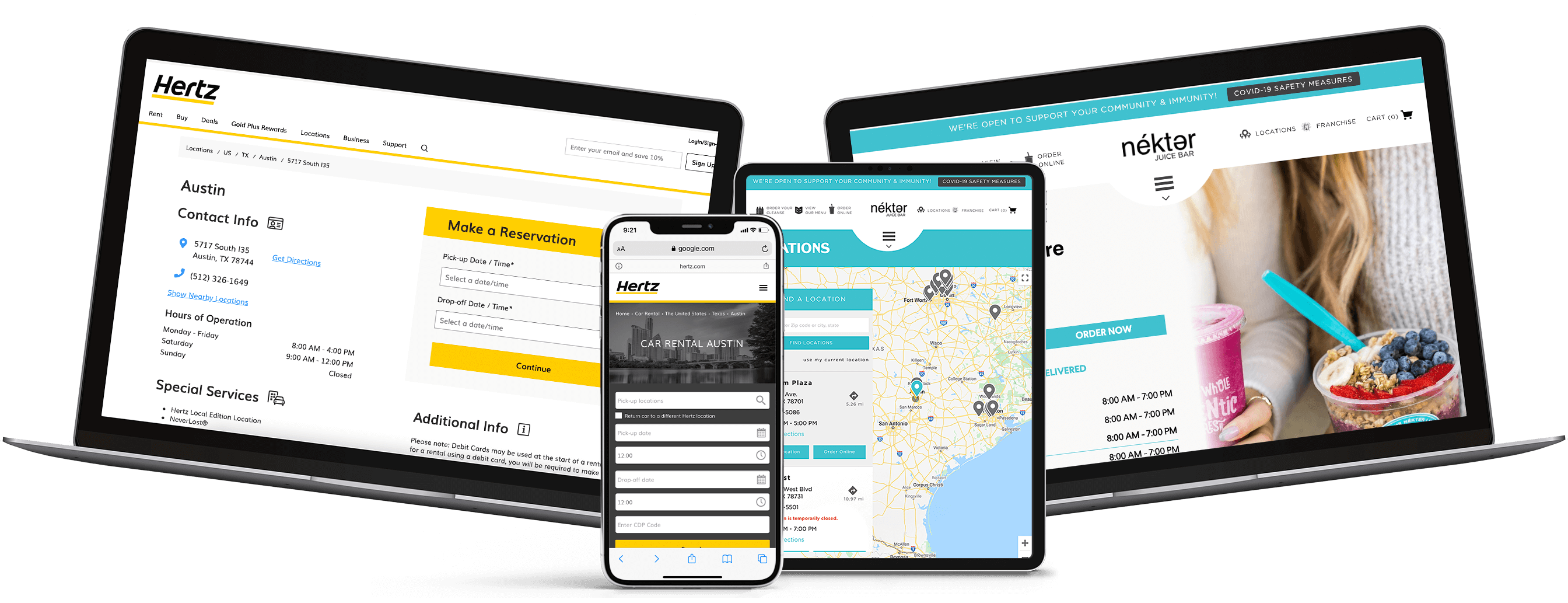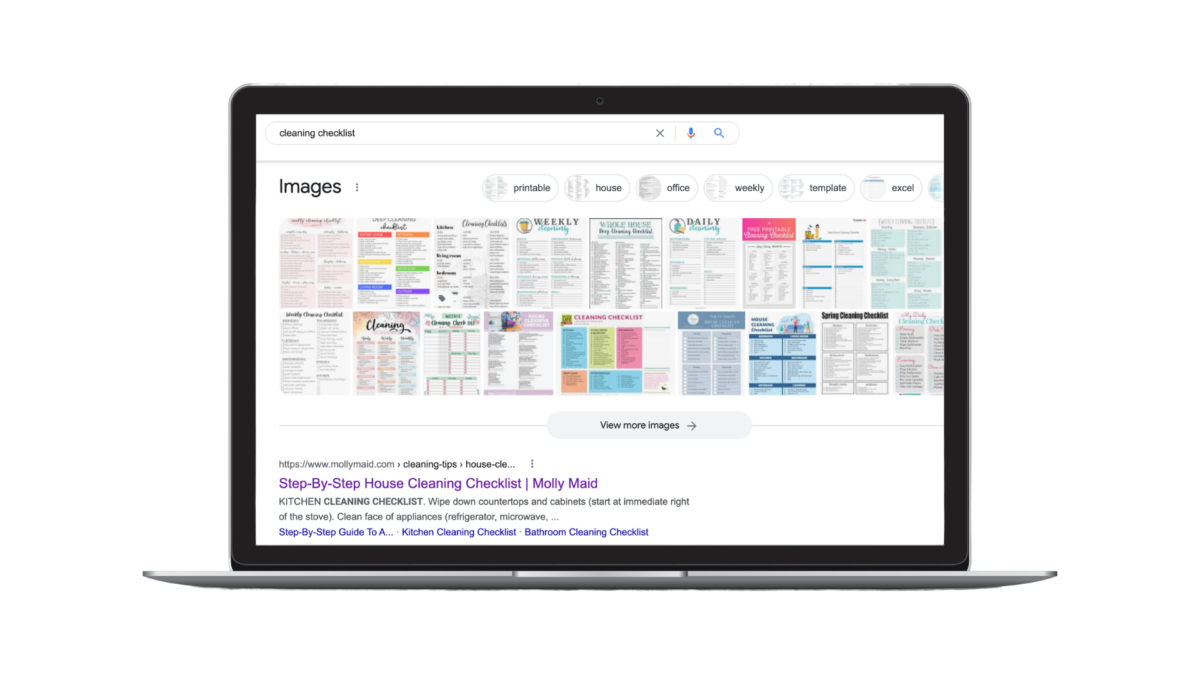How to Incorporate a Keyword Strategy Into Your Multi-Location Marketing Efforts
To increase brand awareness and online traffic, you need people visiting your website. One way to increase online traffic is through search engine optimization (SEO). A large piece of your SEO strategy involves creating a keyword strategy and conducting keyword research.
In this article, we’ll explain what a keyword strategy is, why it’s essential for your multi-location business, and how to create one.
What is a Keyword Strategy?
Table of Contents
A keyword strategy involves conducting keyword research to discover keywords and terms that consumers are searching for and interested in that relate to your business. A keyword strategy also involves determining how to use these keywords across your website, local landing pages, ads, and content.
So, how does a keyword strategy affect your multi-location marketing efforts?
An effective keyword strategy helps you rank higher on the search engine results pages (SERP). Ranking higher on the SERP helps your multi-location business meet online customers where they’re searching, which increases your brand’s relevance and gets more qualified leads.
The first step in creating your business’s keyword strategy is to conduct keyword research, which we’ll explain in more detail next.
What is Keyword Research and Why It’s Important
Keyword research is the process of finding search terms relevant to your multi-location business that consumers are interested in and typing into search engines like Google.
Keyword research helps you:
- Understand your audience’s interests
- Find relevant terms and topics your audience is interested in
- Increase online search and local visibility
- Build brand awareness
- Get more qualified leads
Going after the right keywords can help draw in potential consumers that are more likely to purchase from your business. Conversely, having the wrong keywords can mislead online users, and they’re more likely to bounce from your website. Here’s how to start your keyword research.
How to Conduct Keyword Research
Again, the first step in creating a keyword strategy is to do keyword research. Your keyword research will also reveal which keywords you currently rank for and how people search for your business.
When conducting keyword research, ask yourself if people’s searches align with your business offerings? You can also look into where competitors are outranking you.
Understand How Consumers Are Finding You
First, you want to understand how online consumers find you. One way to do this is by using an SEO and keyword tool like Google Keyword Planner, Semrush, Ahrefs, or Moz.
When you enter your website domain into one of these keyword tools, you’ll see which search terms your business ranks for. Many of these keywords will be branded keywords (keywords containing your brand name). The non-branded terms will give better insight into how consumers find your multi-location business.
Here’s an example of Taco Bell’s top keywords in Semrush. As you can see, some of these are related to local searches.
Once you have a list of keywords your multi-location business is ranking for, you can also determine your most popular URLs and pages through these keyword tools and Google Analytics.
Knowing your top-ranking keywords and pages helps you determine which pages, products, and services consumers are most interested in and how they’re discovering them. It also lets you know which pages need further optimization and keywords to focus more time and energy on.
Now that you understand what keywords and pages you’re ranking for, it’s time to determine where there’s a competitor keyword gap.
See How You Compare to Competitors
Another significant benefit of keyword research is discovering your keyword overlap and keyword gap between you and your competitors.
A keyword overlap consists of keywords you and your competitors share. For some keywords, you might outrank competitors, or vice versa, they’ll outrank you.
A keyword gap contains keywords that competitors are ranking for and you aren’t.
You can use the same keyword tools mentioned earlier to discover the keyword overlap and gap between your domain and your competitors. Knowing this competitive keyword landscape is a crucial part of your keyword strategy. It’ll help you determine which keywords you need to put more paid advertising behind, optimize your website for, and create more keyword-targeted content around.
Keyword Strategy Tactics
After completing your keyword research, you have an idea and framework of which keywords you rank for, which ones you want to rank for, and the gap between you and your competition.
Now, it’s time to learn how to best use your keyword research to develop your keyword strategy. Here are four keyword strategy tactics you can implement today!
1. Let Domain Authority and Keyword Difficult Help Guide You
When considering if you should target a keyword you should leverage two metrics: domain authority and keyword difficulty. We’ll discuss domain authority first.
Domain Authority Defined
Domain authority is a search engine ranking score that helps websites determine their relevance within an industry and their subject-matter expertise.
Our previously mentioned SEO ranking tools use a scale from zero to 100 when determining domain authority, with 100 being the highest possible score. In general, the higher your domain authority score, the more relevance you have on search engines, and the easier it is for you to rank on the SERP for specific keywords. For example, Google has a domain authority of 99.
Use Moz, Ahrefs, or Semrush’s domain authority tool to check your domain’s authority and competitors. It’s worth noting that each of these SEO tools use their own unique domain authority scoring system. However, most sites have a similar domain authority amongst all three tools.
Knowing your domain authority and your competitors’ domain authority will help you decide which keywords you can go after.
Keyword Difficulty Score Defined
The other metric worth considering is keyword difficulty (KD) score. Similar to domain authority, all three major SEO tools (Ahrefs, Moz, and Semrush) use their own unique keyword difficulty scoring system. Typically, a keyword will have a similar KD score amongst all three SEO tools.
Similar to domain authority, KD scores are on a scale from zero to 100 with 100 being the most difficult to rank for.
Here’s how Semrush breaks down their KD score and the ability for websites to rank.
- Very hard (85-100)
- Hard (70-84)
- Difficult (50-69)
- Possible (30-49)
- Easy (15-29)
- Very easy (0-14)
How Domain Authority and Keyword Difficult Work Together
When considering a keyword from your keyword research you want to take into account the term’s keyword difficulty score and your domain authority. A good rule of thumb is to go after keywords with a KD score similar to or below your website’s domain authority.
These are general guidelines, and with a well-written and designed piece of content or landing page, you can rank for a keyword above your domain authority. What’s most important is going after keywords that are relevant to your multi-location business.
2. Go After Local Queries
Multi-location businesses must include local keywords in their keyword strategy. Many of the keywords your multi-location business currently ranks for are likely local. Your keyword research should reveal which local keywords you’re already ranking for.
In general, local keywords fall into two categories: Geomodifed searches and geolocated searches.
Geomodifed searches include an actual geographic location (city, state, neighborhood, etc.) within the long-tail keyword or search term. For example:
- Sushi in Los Angeles
- Bank in Queens, New York
- Car paint shop Omaha
- San Diego tacos
Multi-location businesses want to track geomodified searches and keywords for all of their business listings so they can rank higher on the SERP and attract more customers.
Geolocated searches are searches that include terms like “near me” where search engines or apps know your current location and will find businesses or online content relevant to your search and location. For example:
- Hotels near me
- Hardware store nearby
- Senior living communities near me
- Best local food
It’s worth noting that sometimes you don’t even need a geolocated modifier. For instance, if you search on Google for “gyms,” you’ll likely get a list of gyms and fitness centers near you because search engines’ algorithms understand your intent.
Ideally, your main website or homepage wouldn’t target these geomodified or geolocated keywords. Instead, you want your local landing pages and locator page to target these keywords since they’re created for local SEO.
Note, a locator page or service area page is a web page that lists all of your business’s locations with key information customers and search engines want to know, such as NAP (name, address, phone number), hours of operation, reviews, etc.
If you need help managing your local pages, consider using SOCi Local Pages and Locator. SOCi can help you optimize and manage your local pages to increase local search rankings, visibility, and foot traffic.
For more in-depth local SEO tips, read our Top 10 Things You Should Be Doing in Local SEO Now guide.
3. Create Content That Matches the SERP
Many of the keywords you’re currently ranking for will be tied to your homepage or additional landing pages including your local pages. The other keywords will likely be connected to your online content, such as blog posts, guides, studies, or videos.
Therefore, you want to analyze the SERP for the keyword you’re going after when updating existing content or creating new keyword-targeted content. Understand what’s currently ranking on the SERP and consider if you can make similar content. Here are a few content categories that often appear on the SERP:
- Blog posts
- Printable PDFs
- Listicles
- Long-form guides
- Data or case studies
- Surveys
- Videos
For example, if you’re a hardware store wanting to rank for the keyword “cleaning checklist” you’ll notice that the majority of top-ranking pieces are printable PDFs. Therefore, your content will likely need to include a printable PDF to rank on the SERP.
It’s important to match what is on the SERP because that’s often the type of content online users want or are expecting based on their search strings and the keywords used. Not researching and matching what’s on the SERP can hurt your ability to rank for a keyword.
If you can’t create certain types of content, consider expanding your team, hiring a freelance marketer or an outside content marketing agency, or choosing a different keyword.
4. Track, Report, and Optimize
Like any multi-location marketing strategy, you need to track the progress of your goals and continually optimize them. Below are a few keyword tracking and optimization tactics to consider:
- Track your top 20-100 keywords each month.
- Identify which keywords are still ranking. Have your pages dropped in the SERP? Does your content or website need updating?
- Identify which keywords are still ranking. Have your pages dropped in the SERP? Does your content or website need updating?
- Re-evaluate your target keywords every month or quarter.
- Is there still search volume behind these keywords? Are variations of specific keywords getting more search volume?
- Is there still search volume behind these keywords? Are variations of specific keywords getting more search volume?
- As your domain authority increases, you can go after more difficult keywords.
- Create content that goes after higher difficulty keywords. See how well you rank and if these pieces get clicks or page visits.
- Create content that goes after higher difficulty keywords. See how well you rank and if these pieces get clicks or page visits.
- Update your keyword research either bi-annually or annually.
- You might need to adjust your keyword research due to changes in trends or competitors developing their keyword strategy.
Building a keyword strategy takes time and effort, but will pay off in terms of ROI. When done correctly, your keyword research and strategy will increase your multi-location brand’s online presence. In doing so, you’ll gain more leads and increase sales across all locations. If you need help optimizing your local pages and locator, request a demo today!




